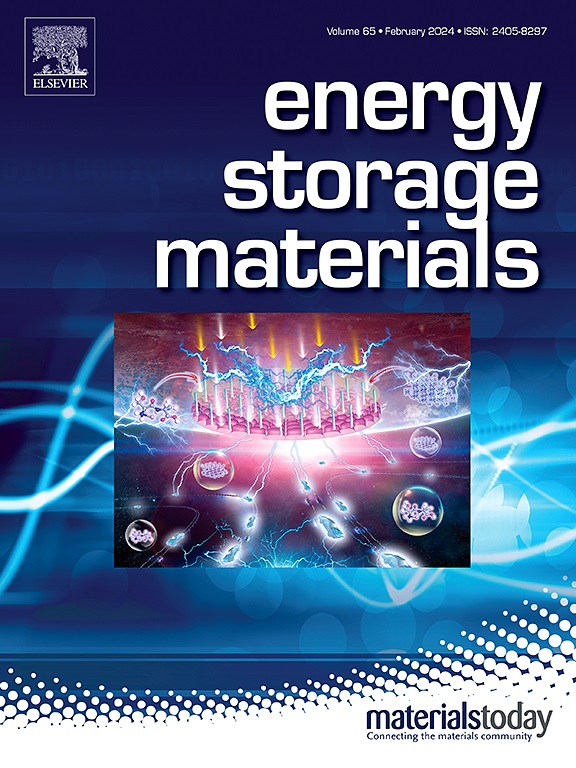Versatile chemical repair strategy for direct regeneration of cathode materials from retired lithium-ion battery
IF 18.9
1区 材料科学
Q1 CHEMISTRY, PHYSICAL
引用次数: 0
Abstract
Direct recycling of retired lithium-ion batteries offers a promising solution to address resource scarcity and environmental concerns. While existing recovery methods focused on black mass face limitations, which underscores the demand for universal and efficient strategies to regenerate degraded cathode materials. Here, we introduce a highly compatible chemical lithiation-based method for regenerating degraded LiFePO4 materials. This process uses a multifunctional bipyridine-lithium reagent to drive spontaneous chemical reactions, followed by annealing that simultaneously restores structural integrity and introduces nitrogen doping. The regenerated material delivers a discharge capacity of 164 mAh g⁻¹ and retains 90 % of its capacity after 500 cycles at 0.5C. Additionally, this method enables in-situ regeneration of degraded electrodes, yielding a 10 % enhancement in initial capacity compared to untreated samples. This approach provides a feasible solution for the direct regeneration of cathode materials, paving the way for sustainable practices in the circular development of the battery industry.


退役锂离子电池正极材料直接再生的通用化学修复策略
直接回收退役锂离子电池为解决资源短缺和环境问题提供了一个很有前途的解决方案。而现有的黑质量回收方法面临着局限性,这凸显了对通用和高效再生降解阴极材料策略的需求。在这里,我们介绍了一种高度兼容的基于化学锂化的再生降解LiFePO4材料的方法。该工艺使用多功能联吡啶锂试剂驱动自发化学反应,然后进行退火,同时恢复结构完整性并引入氮掺杂。这种再生材料的放电容量为164毫安(g - 1),在0.5℃下循环500次后仍能保持90%的容量。此外,该方法可以实现降解电极的原位再生,与未经处理的样品相比,初始容量提高了10%。该方法为阴极材料的直接再生提供了可行的解决方案,为电池行业的循环发展的可持续实践铺平了道路。
本文章由计算机程序翻译,如有差异,请以英文原文为准。
求助全文
约1分钟内获得全文
求助全文
来源期刊

Energy Storage Materials
Materials Science-General Materials Science
CiteScore
33.00
自引率
5.90%
发文量
652
审稿时长
27 days
期刊介绍:
Energy Storage Materials is a global interdisciplinary journal dedicated to sharing scientific and technological advancements in materials and devices for advanced energy storage and related energy conversion, such as in metal-O2 batteries. The journal features comprehensive research articles, including full papers and short communications, as well as authoritative feature articles and reviews by leading experts in the field.
Energy Storage Materials covers a wide range of topics, including the synthesis, fabrication, structure, properties, performance, and technological applications of energy storage materials. Additionally, the journal explores strategies, policies, and developments in the field of energy storage materials and devices for sustainable energy.
Published papers are selected based on their scientific and technological significance, their ability to provide valuable new knowledge, and their relevance to the international research community.
 求助内容:
求助内容: 应助结果提醒方式:
应助结果提醒方式:


